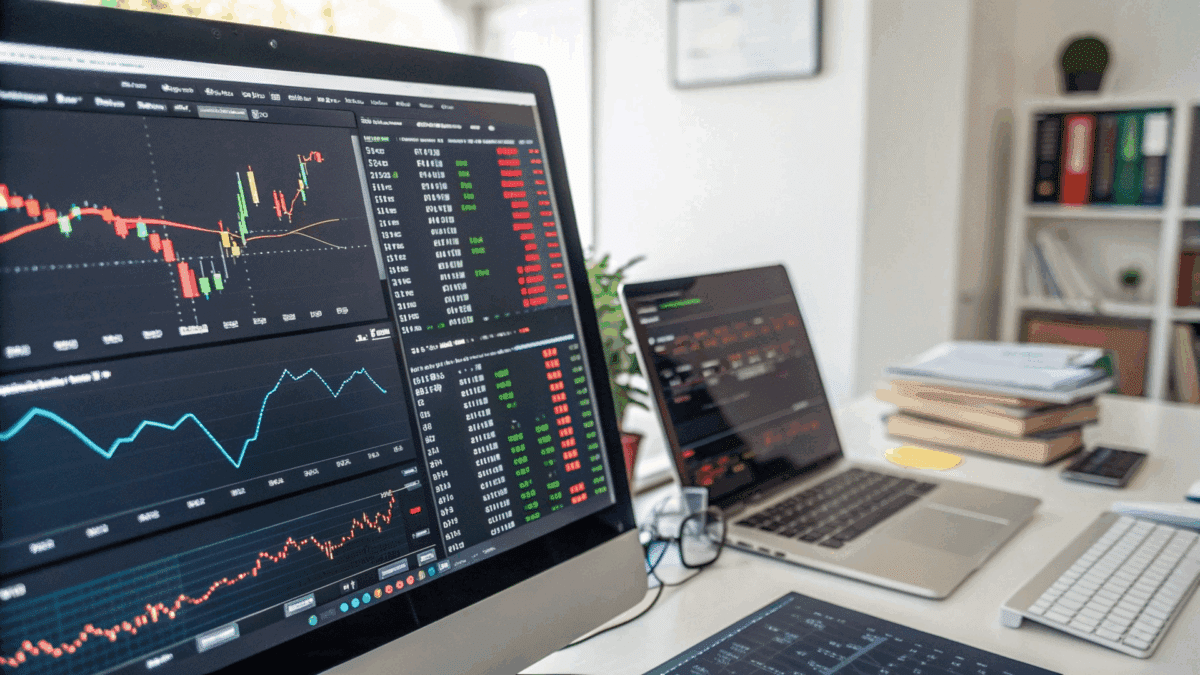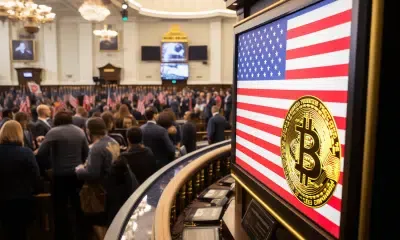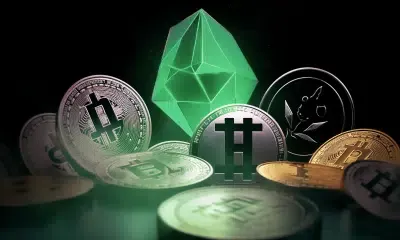
The crypto asset XRP, central to Ripple’s ambitions of overhauling global payments, is navigating a pivotal period. Much of the regulatory haze hanging over XRP’s main market, the US, dissipated after a long, high-stakes court fight with the SEC finally concluded. Does that clarity automatically make XRP a smart investment choice, though? Let’s unpack XRP’s basic mechanics, its current standing, the hurdles it faces, and its growth prospects to figure out if it belongs in an investment strategy for 2025.
Getting Down to Basics: What Drives XRP?
Created back in 2012, XRP functions on its own unique system called the XRP Ledger (XRPL), a public, decentralized blockchain different from giants like Bitcoin or Ethereum. It was built from the ground up with businesses, especially those involved in payments, in mind:
- Quick and Cheap: Transactions on the XRPL finalize incredibly fast, typically settling within 3 to 5 seconds. Plus, they cost peanuts – roughly $0.0002 each. That quickness and low expense are big selling points for moving money across borders.
- Handles Volume: The network was engineered to manage a large number of transactions, often claimed to handle 1,500 every second (TPS). That capacity leaves many old banking systems and even basic blockchains like Bitcoin in the dust.
- How Agreement Works: It keeps things in sync using the XRP Ledger Consensus Protocol. This involves independent computers (validators) agreeing on which transactions are valid and in what order, skipping the massive energy drain seen in Proof-of-Work mining.
- The Token Setup: A total of 100 billion XRP were created right at the start, and that’s the absolute maximum – no more can ever be made. Right now, about 58.5 to 59 billion XRP are actually available for trading. Ripple itself holds a large chunk locked away in escrow accounts, releasing portions on a set schedule. Every transaction also destroys a tiny fraction of an XRP, which helps stop network spam and adds a very slight deflationary effect over time.
Ripple and XRP: Teammates, Not Twins
It’s really important to separate Ripple, the financial tech company, from XRP, the actual digital coin. They’re obviously connected, but they aren’t interchangeable. Ripple uses the XRPL technology and the XRP coin for some of its business products, particularly its Ripple Payments service (which used to be called On-Demand Liquidity or ODL).
- Ripple Payments (ODL) Explained: This service uses XRP like a temporary bridge currency. It helps provide money instantly for international payments, getting rid of the old system where banks had to keep funds parked in accounts (nostro/vostro) all over the world. Money gets changed into XRP, sent across the ledger, and then changed back into the local currency at the destination, all within seconds.
- Who’s Using It?: Ripple has signed deals with many financial companies around the globe. But, a lot of these partners use RippleNet’s communication tools (like the old xCurrent system) without actually using the XRP coin itself. We know for sure that money transfer companies like Tranglo and SBI Remit use ODL, meaning they actively use XRP. Big names like Santander and Bank of America work with Ripple, but there’s no solid proof they use XRP through ODL widely, possibly due to past worries about regulations. How much XRP is really being used through ODL is still a make-or-break question for its overall value.
Navigating the Rules: Life After the SEC Lawsuit
The biggest headache for XRP has definitely been the regulatory environment, especially in the United States.
- The SEC Lawsuit Drama: Back in December 2020, the SEC sued Ripple, claiming the company sold XRP as an unregistered security (like a stock). This lawsuit cast a huge shadow of doubt and definitely slowed down XRP adoption.
- The Big Court Decision & Settlement: A court ruling in July 2023 brought some much-needed answers. It decided that XRP itself isn’t automatically a security. Sales of XRP on regular crypto exchanges (“programmatic sales”) weren’t treated as security sales either. However, the court did find that Ripple’s direct sales to big institutions did count as security offerings. After both sides threatened appeals, they finally reached a settlement deal, filed in May 2025. Ripple agreed to pay a $50 million fine (down from the $125 million the court initially proposed), both Ripple and the SEC promised to drop their appeals, and they plan to ask the court to remove the restrictions previously placed on Ripple.
- What It Means: This settlement clears away a massive regulatory roadblock in the US. It could encourage more big institutions to get involved and make crypto exchanges more comfortable listing XRP.
- Around the World: Rules for crypto vary quite a bit internationally. The European Union’s MiCA rules create a clear system, likely putting XRP in the category of “other crypto-assets.” The UK is building its own rules, treating crypto activities like other financial services, and had already suggested XRP wasn’t a security under its laws. Japan seems to see XRP as a crypto-asset too, not a security. Singapore has given Ripple a license for payments, and Dubai has given XRP the green light for use. This mix of global rules means staying compliant is still tricky, but key places outside the US have been more welcoming.
Market Check: Price Moves, Trading Action, and Vibes
XRP’s price chart tells the story of its chaotic past and recent good news:
- Where It Stands Now: Around May 12, 2025, XRP is hovering between $2.40 and $2.60. It consistently stays among the biggest cryptocurrencies (often #3) based on total market value, recently pegged at about $152 billion. A lot of XRP changes hands daily, with recent reports showing volumes anywhere from $3.65 billion to $8.8 billion.
- Looking Back: XRP hit its record high of nearly $3.84 way back in the 2017-2018 crypto boom. It didn’t manage to beat that peak in later market surges, largely because the SEC lawsuit weighed it down. Compared to Bitcoin, its performance hasn’t kept pace over the long haul.
- What People Think:
- Everyday Investors (the “XRP Army”): They are still extremely enthusiastic and loyal. Many see the SEC settlement as proof they were right all along and expect the price to shoot up as XRP gets used more.
- Big Money Institutions: They’re warming up now that the settlement is done. Clear rules are vital for them. They’re interested in ODL’s possibilities but are waiting to see broader use. Talk of a potential spot XRP ETF (like the Bitcoin ones) gets them excited.
- Market Watchers/Analysts: Opinions are varied, but the mood is generally more positive after the settlement news. Chart watchers see potential for prices to climb ($3.00 and higher), while those focused on fundamentals are weighing real-world use against the risks. Price guesses are all over the map, from modest increases to very hopeful long-term predictions ($10 or more).
The Competition: Can XRP Keep Up?
XRP isn’t alone in trying to fix global payments; it’s a crowded field:
- SWIFT GPI: The old guard, SWIFT, isn’t standing still. Its GPI initiative makes existing bank transfers faster and easier to track – it’s an improvement on the system banks already rely on.
- Stablecoins (like USDT, USDC): These coins maintain a steady value (usually pegged to the dollar) and are already popular for sending money and trading. Ripple’s own planned stablecoin, RLUSD, will jump right into this competitive space.
- Stellar (XLM): This is a very close rival with similar aims – fast, cheap payments. However, Stellar often focuses more on bringing financial services to underserved populations, whereas Ripple targets established institutions.
- Government Digital Currencies (CBDCs): These are a double-edged sword. XRP could potentially act as a bridge between different countries’ CBDCs (an opportunity). But, CBDCs might also bypass private payment solutions like Ripple’s altogether (a threat). Ripple is actively participating in CBDC experiments worldwide.
What’s Next?: The XRPL Plan and Potential Boosts
The technology behind XRP isn’t sitting idle; development is ongoing:
- Finance for Institutions: Plans include building a native lending system, adding better tools for compliance (like Digital Identity – DID), and creating features to support putting real-world things like property onto the blockchain (Real-World Asset tokenization using Multi-Purpose Tokens – MPTs).
- More Programming Power: A side-network compatible with Ethereum’s popular programming tools (EVM) is expected to go live soon (likely Q2 2025), hoping to draw in developers familiar with Ethereum. Another feature called “Hooks” will let developers add simple smart contract functions directly to the main XRPL.
- New Features: An Automated Market Maker (AMM) for easier trading on the XRPL launched but needs a technical fix. A “Clawback” feature, allowing asset issuers to reclaim tokens under certain conditions, is already active. Ripple is also launching its own stablecoin backed by US dollars, called RLUSD.
- Things That Could Drive Growth: The big potential game-changers are getting more banks and financial firms to actually use Ripple Payments/ODL, getting approval for spot XRP ETFs that would make it easier for traditional investors to buy, and successfully rolling out all the planned upgrades to the XRPL.
The Danger Zone: What Could Derail XRP?
Even with the recent positive turn, investing in XRP still carries considerable risks:
- Tricky Regulations: While the US lawsuit is settling, rules around the world are still developing. Future government actions could create new problems for XRP.
- Wild Price Swings: Like most cryptos, XRP’s price can jump up or crash down very quickly. It’s not for the faint of heart.
- Will Anyone Actually Use It?: The main argument for investing heavily relies on big institutions adopting XRP widely through the ODL service. That hasn’t happened on a massive scale yet, and there’s no guarantee it will.
- Tough Competition: Strong rivals like stablecoins, other payment blockchains, and possibly government digital currencies could steal market share from XRP.
- Tech Troubles: Any blockchain network can potentially suffer from software bugs, security holes, or problems with the computers validating transactions, even though the XRPL has been running reliably for years.
- Ripple’s Influence & Holdings: Ripple still owns a huge amount of XRP (in escrow) and has significant sway over the network’s development. Some worry this creates potential selling pressure down the line and makes the system less decentralized than ideal.
XRP in Your Mix: Smart Addition or Risky Gamble?
- Mixing Things Up: In the past, XRP (like many cryptos) hasn’t always moved in sync with traditional investments like stocks and bonds, which could theoretically help diversify a portfolio, though this relationship can change. It might also add variety within your crypto holdings because of its specific payment focus.
- What You’re Betting On: An investment gives you direct exposure to the idea of using blockchain for payments and settlements.
- The Risk Factor: Make no mistake, XRP is a high-risk, speculative bet. Its tendency for sharp price moves means you need to be comfortable with potential losses.
- How Much?: Investment advisors usually suggest putting only a very small slice (say, 1% to 5%) of your total investment money into highly speculative assets like cryptocurrencies.
Wrapping Up: The Call on XRP for 2025
With the SEC lawsuit largely behind it, XRP now operates with much clearer rules in the crucial US market. The technology it runs on demonstrably offers speed and cost benefits for its main goal: fixing international payments. The XRPL continues to evolve with promising upgrades. Ripple has partners, and the potential to shake up the massive cross-border payment market is undeniable.
Still, betting on XRP isn’t a sure thing. It faces fierce competition, its success is heavily linked to getting major institutions to actually use ODL (which is happening slowly), and the crypto market remains inherently volatile. Clearing the legal hurdle was huge, but it doesn’t automatically guarantee triumph.
For investors, XRP is still a gamble – one with potentially high rewards but equally significant risks. Its fate now depends less on winning court cases and more on delivering on its promise: proving it can be a vital piece of the global financial machinery at scale. Before putting any money into XRP, you need to fully grasp the risks involved and truly believe in its specific payment mission. Any investment should be a carefully considered part of a broader, diversified financial plan.




